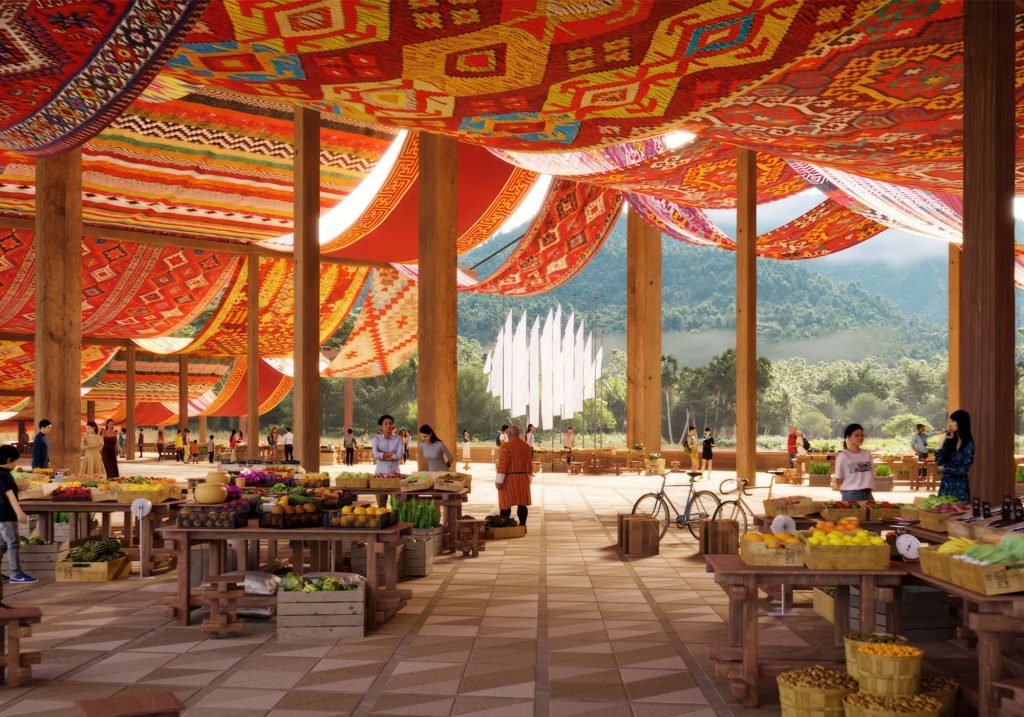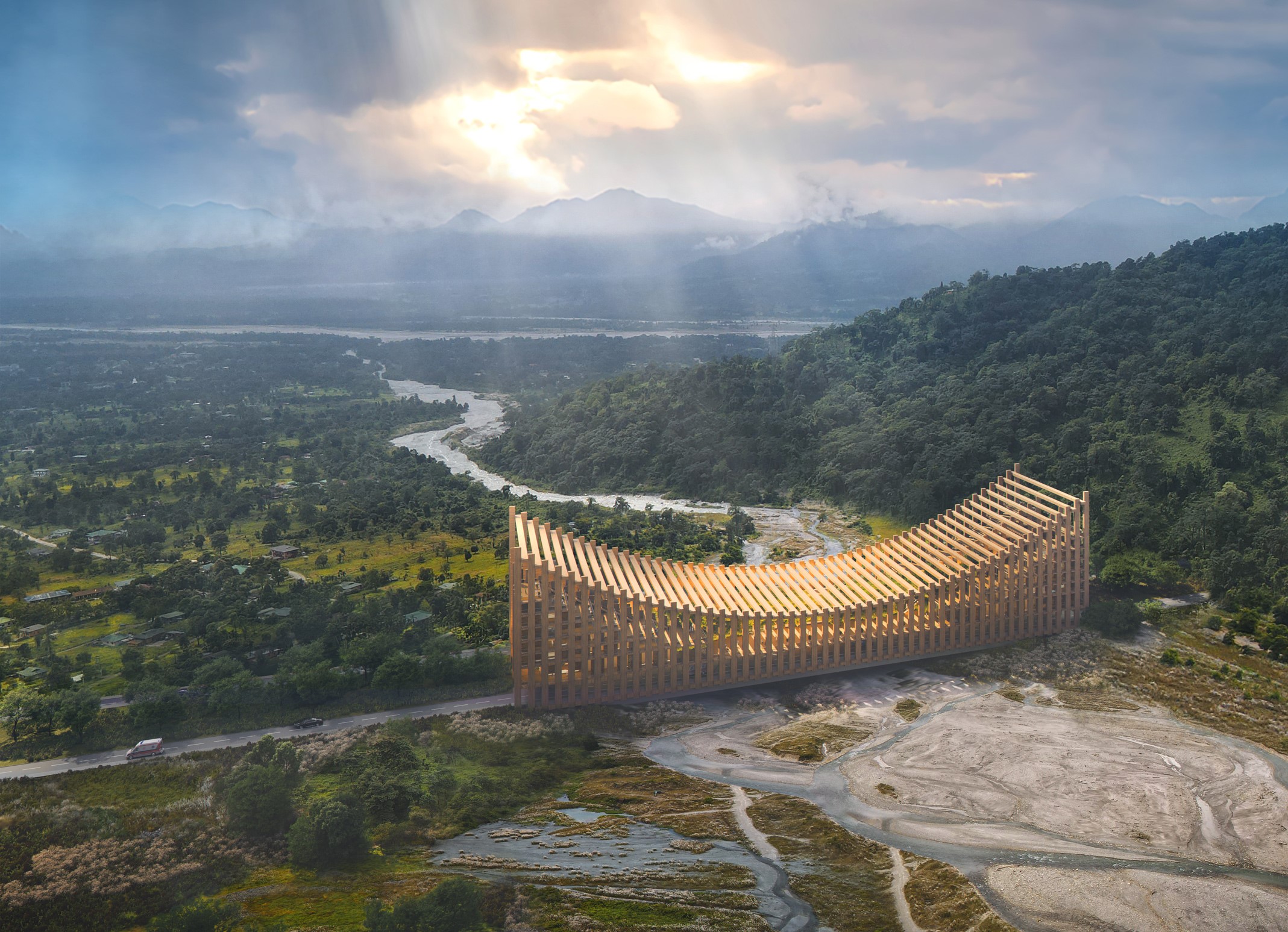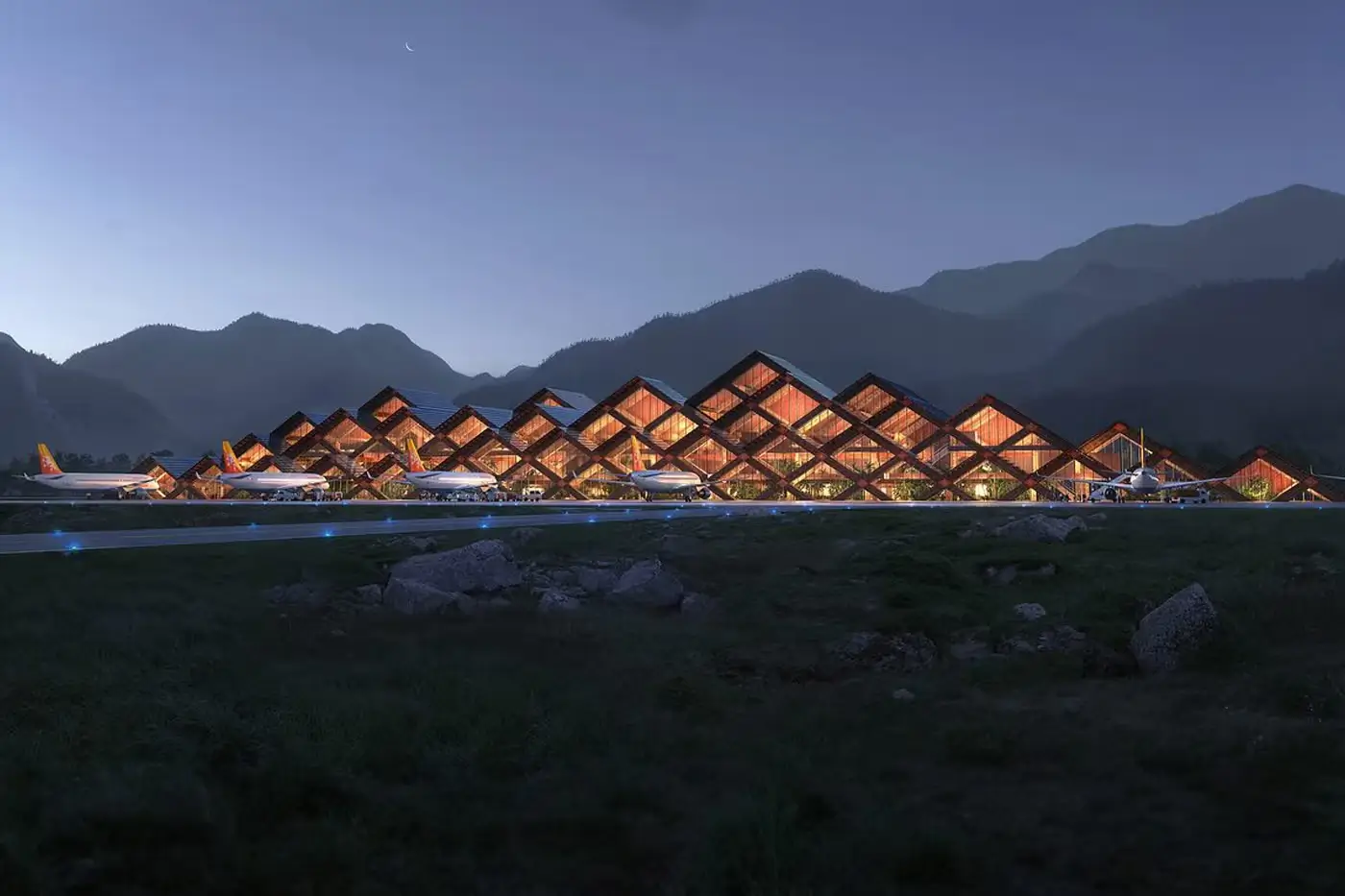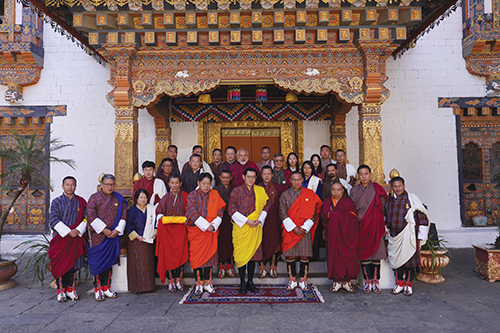In the evolving landscape of special administrative regions (SARs) and special economic zones (SEZs) worldwide, Bhutan's Gelephu Mindfulness City (GMC) emerges as a distinctly innovative model. This comprehensive analysis explores what truly sets GMC apart from other special administrative regions globally, examining its unique philosophical foundations, governance structures, economic approaches, and environmental commitments. By understanding these distinguishing features, investors, policymakers, and citizens can better appreciate GMC's potential significance as a blueprint for 21st-century urban development.
Beyond Economic Growth: A Philosophical Revolution
The Mindfulness Foundation
The most fundamental distinction between GMC and other special administrative regions lies in its philosophical foundation. While most SARs and SEZs worldwide are established primarily to accelerate economic growth through regulatory relaxation and tax incentives, GMC begins with a radically different premise: that urban development should serve holistic human flourishing rather than narrowly defined economic metrics.
"It will be one-of-a-kind, anchored on the vision and values of GNH. It will be a Mindfulness City, encompassing conscious and sustainable businesses, inspired by Buddhist spiritual heritage, and distinguished by the uniqueness of the Bhutanese identity," declared His Majesty King Jigme Khesar Namgyel Wangchuck when announcing the project.
This mindfulness-centered approach represents an evolution of Bhutan's pioneering Gross National Happiness (GNH) philosophy, which has guided the country's development since the 1970s. Prime Minister Tshering Tobgay describes GMC as "gross national happiness 2.0," explaining, "We've applied GNH throughout the country. It has worked. But how do we apply GNH in a modern urban environment?"
Comparative Context: Conventional SARs
To appreciate this distinction, consider the founding principles of other prominent special administrative regions:
- Hong Kong SAR (China): Established to maintain Hong Kong's capitalist system and way of life while returning sovereignty to China, with economic prosperity and stability as primary goals.
- Dubai International Financial Centre (UAE): Created specifically to establish a global financial hub with regulatory independence, focusing almost exclusively on economic and financial sector development.
- Shenzhen SEZ (China): Developed as an experiment in market-oriented reforms and opening to foreign investment, with GDP growth as the central metric of success.
- Iskandar Malaysia: Designed primarily to capitalize on proximity to Singapore and attract spillover investment through competitive cost structures.
While these regions have achieved remarkable economic success by conventional measures, none began with an explicit philosophical commitment to balancing material prosperity with spiritual well-being, environmental sustainability, and cultural integrity. GMC's mindfulness foundation represents a fundamental reimagining of what urban development can and should prioritize.
Selective Investment Approach: Quality Over Quantity
Curated Business Ecosystem
A second major distinction is GMC's selective approach to investment partnerships. Unlike conventional SARs that typically welcome any business willing to invest, GMC screens potential partners based on their alignment with Bhutanese values and the city's development vision.
As reported in The Diplomat, "Gelephu, unlike other SEZs, will host businesses screened and invited based on their respect for the Bhutanese way of life, sustainable and equitable development, and sovereignty." This curated approach prioritizes the quality and alignment of investment over sheer quantity or size.
Comparative Context: Open-Door Policies
This selective stance contrasts sharply with the approach of most special economic zones:
- Shenzhen SEZ: Initially welcomed virtually any manufacturing operation willing to establish facilities, with limited environmental or social screening.
- Dubai Multi Commodities Centre: Offers fast-track licensing to almost any business that meets basic financial requirements, with minimal values-based screening.
- Panama Pacifico Special Economic Area: Focuses primarily on tax benefits and streamlined processes to attract the maximum number of companies across sectors.
GMC's selective approach may result in slower initial growth compared to these regions, but aims to create a more coherent, values-aligned business ecosystem that supports its broader vision of mindful development.
Governance Integration: Autonomy with Cultural Continuity
Bhutanese Values in Modern Governance
GMC's governance model represents another significant innovation. While operating as an autonomous region with its own executive, legislative, and judicial systems, GMC maintains deep integration with Bhutanese cultural values and leadership structures.
This is evident in the composition of its leadership, with His Majesty the King serving as Chairman of the Board, former Prime Minister Dasho Dr. Lotay Tshering as Governor, and a Board of Directors comprising experts in various fields. This structure creates a bridge between traditional Bhutanese governance and modern administrative requirements.
The December 2024 enactment of GMC Law No. 1, which adopted 18 Singaporean laws and 10 Abu Dhabi Global Market Financial regulations, demonstrates this balanced approach—incorporating international best practices while maintaining alignment with Bhutanese values through royal oversight and cultural integration.
Comparative Context: Governance Disconnects
This integrated approach differs notably from governance models in other special regions:
- Hong Kong SAR: Operates under the "One Country, Two Systems" principle, creating an intentional separation between Hong Kong's governance system and mainland China's approach.
- Labuan International Business and Financial Centre (Malaysia): Functions almost as a separate jurisdiction with minimal integration of Malaysian cultural elements in its governance approach.
- Batam Free Trade Zone (Indonesia): Operates under special regulations that often create disconnects with Indonesian cultural and governance traditions.
GMC's model suggests that administrative autonomy need not require cultural disconnection—that special regions can maintain distinctive regulatory approaches while remaining authentically connected to national identity and values.
Environmental Integration: Building With Nature
Nature-First Urban Design
Perhaps the most visually striking distinction between GMC and other special administrative regions lies in its physical design and environmental approach. Masterplanned by Danish architect Bjarke Ingels in collaboration with Arup and Cistri, GMC's design literally embeds the city within nature rather than replacing it.
Key features include:
- No structure taller than the surrounding trees
- Minimal development near wildlife sanctuaries and farmlands
- Dzong (fortress)-inspired inhabitable bridges containing key infrastructure
- A Temple-Dam on the Sankosh River that integrates spiritual architecture with renewable energy generation
This "Building with Nature" philosophy extends to operational commitments: all vehicles will be electric, single-use plastics banned, all food sourced organically, and all electricity generated from renewable sources. The city aims to be the world's first carbon-negative urban development, extending Bhutan's national achievement to the city scale.
Comparative Context: Nature as Afterthought
This approach contrasts dramatically with conventional urban development in special economic zones:
- Shenzhen SEZ: Rapid development led to extensive environmental degradation, with environmental considerations addressed primarily as remediation after economic growth.
- Iskandar Malaysia: Despite sustainability rhetoric, development has proceeded with conventional urban forms that often require substantial modification of natural systems.
- Clark Special Economic Zone (Philippines): Developed primarily through conversion of a former military base, with nature treated as amenity rather than foundational element.
While many newer special zones now incorporate sustainability elements, GMC stands apart in making environmental integration the starting point of design rather than a modification to conventional urban forms.
Digital Asset Innovation: Blockchain at the Core
Strategic Digital Reserves
GMC's January 2025 announcement of its intention to recognize digital assets such as Bitcoin, Ether, and BNB as part of its strategic reserves represents another revolutionary departure from conventional special administrative regions. This makes GMC one of the first jurisdictions globally to officially hold digital assets as strategic reserves.
This approach extends to the establishment of Asia's first fully "Digital Reserve Bank" named "Oro" with a digital currency called "Ter," positioning GMC at the forefront of financial innovation. Rather than merely permitting cryptocurrency operations within its borders, GMC is integrating digital assets into its fundamental economic architecture.
Comparative Context: Cautious Regulation
This proactive stance differs markedly from approaches in other regions:
- Hong Kong SAR: Has moved toward regulated cryptocurrency trading but maintains a cautious approach to institutional integration of digital assets.
- Dubai International Financial Centre: Permits regulated cryptocurrency operations but has not integrated digital assets into government reserves or central banking.
- Singapore: Despite being a financial innovation hub, maintains clear separation between conventional monetary policy and digital asset ecosystems.
GMC's approach suggests a fundamentally different relationship with financial innovation—one that embraces emerging technologies as core components of economic infrastructure rather than peripheral experiments.
Cultural Authenticity: Development Without Westernization
Bhutanese Identity at the Center
A subtle but profound distinction lies in GMC's commitment to maintaining authentic Bhutanese cultural identity throughout its development. Unlike many special economic zones that effectively become culturally internationalized spaces with limited connection to local traditions, GMC explicitly centers Bhutanese identity in its design, governance, and economic focus.
This is evident in the prominence given to the Vajrayana center as an initial development priority, the integration of traditional architectural elements throughout the masterplan, and the commitment to screening businesses based partly on their respect for Bhutanese cultural values.
Comparative Context: Cultural Dilution
This approach contrasts with the cultural evolution of many special economic zones:
- Shenzhen SEZ: Rapidly transformed from a fishing village to a cosmopolitan city with limited preservation of local cultural distinctiveness.
- Dubai International Financial Centre: Functions as an international enclave with governance and culture substantially disconnected from traditional Emirati practices.
- Incheon Free Economic Zone (South Korea): Deliberately adopts international standards and practices that often diverge from traditional Korean approaches.
GMC's emphasis on cultural authenticity suggests that economic development need not require cultural homogenization—that distinctive cultural identities can be preserved and even strengthened through thoughtful development approaches.
Seven-Cluster Economic Focus: Beyond Industrial Specialization
Holistic Economic Ecosystem
GMC's organization around seven interconnected economic clusters represents another distinctive approach. Rather than focusing narrowly on manufacturing, financial services, or technology as many special zones do, GMC has developed a holistic economic ecosystem encompassing:
- Spirituality: Promoting mindfulness and Bhutanese cultural heritage
- Health and Wellness: Establishing GMC as a global destination for holistic health
- Education and Knowledge: Creating a "City of Mindful Learning" with world-class educational institutions
- Green Energy and Tech: Leveraging Bhutan's renewable energy potential to foster innovation
- Finance and Digital Assets: Launching blockchain-backed digital currency and financial ecosystem
- Agri-Tech and Forestry: Enhancing food security and sustainable agriculture practices
- Aviation and Logistics: Developing the Gelephu International Airport as a regional hub
This integrated approach recognizes the interconnections between different aspects of human activity and well-being, rather than treating economic sectors as isolated domains.
Comparative Context: Narrow Specialization
This holistic approach differs from the specialized focus of many special economic zones:
- Shenzhen SEZ: Initially focused almost exclusively on manufacturing, later diversifying into technology
- Dubai International Financial Centre: Concentrated primarily on financial services
- Cyberjaya (Malaysia): Developed specifically around information technology and multimedia
- Batam Free Trade Zone (Indonesia): Focused primarily on manufacturing and logistics
GMC's seven-cluster approach suggests that truly sustainable development requires attention to the full spectrum of human needs and activities, rather than narrow economic specialization.
Regional Connectivity: Bridge Between South and Southeast Asia
Strategic Geographic Positioning
GMC's location on the land bridge connecting South Asia to Southeast Asia represents a strategic positioning that few other special administrative regions can claim. This location allows GMC to serve as a connector between two of the world's most dynamic economic regions, with planned infrastructure including:
- The 58 km Gelephu-Kokrajhar rail line connecting to India's Northeast
- Upgrading of Gelephu Airport to international standards
- Road connections through Assam and Northeast India to Myanmar, Thailand, Cambodia, Laos, Vietnam, Malaysia, and Singapore
- This positioning aligns with growing trade between South and Southeast Asia, which according to the World Bank grew ninefold from 2000 to 2018, from $38 billion to $349 billion.
Comparative Context: Single-Region Focus
This bridging position differs from the geographic strategy of most special economic zones:
- Hong Kong SAR: Primarily serves as China's gateway to global markets
- Dubai International Financial Centre: Functions as a hub connecting Europe, Africa, and Asia
- Iskandar Malaysia: Focused specifically on capturing spillover from Singapore
- Clark Special Economic Zone (Philippines): Primarily serves domestic and East Asian markets
GMC's position at the nexus of two distinct but complementary economic regions creates unique opportunities for businesses seeking to connect South and Southeast Asian markets, supply chains, and knowledge networks.
Scale and Ambition: A City-Scale Vision
Unprecedented Scope
With a territory of 2,500 square kilometers—three times the size of Singapore—and an estimated project cost of $100 billion (equivalent to 30 times Bhutan's GDP), GMC represents an unprecedented scale of ambition. This is not a limited special economic zone or a financial district, but a comprehensive city-scale development designed to be built over approximately 21 years.
This scale allows for truly integrated planning across multiple domains—from transportation networks to energy systems, from housing to commercial districts, from agricultural areas to wildlife sanctuaries. Rather than retrofitting sustainability into existing urban forms, GMC can design holistic systems from the ground up.
Comparative Context: Limited Zones
This comprehensive approach contrasts with the more limited scope of many special administrative regions:
- Dubai International Financial Centre: Encompasses just 110 hectares (1.1 square kilometers)
- Labuan International Business and Financial Centre: Covers 92 square kilometers
- Batam Free Trade Zone: Spans approximately 415 square kilometers
- Clark Special Economic Zone: Extends across about 330 square kilometers
Even larger special economic zones like Shenzhen (approximately 2,000 square kilometers) typically developed through gradual expansion rather than comprehensive initial planning at the city scale.
Public-Private Balance: Beyond Pure Market Logic
Guided Development Approach
GMC's development model represents a distinctive balance between public vision and private implementation. While leveraging private investment and expertise, GMC maintains strong public guidance through:
- Royal patronage and oversight
- Selective screening of investment partners
- Public infrastructure development in key areas
The "GMC Nation Building Bond" allowing citizens to invest directly
This approach rejects both pure state planning and unfettered market development in favor of a guided partnership model where public values shape private activity without replacing market mechanisms entirely.
Comparative Context: Market Dominance
This balanced approach differs from the market-dominated models common in many special economic zones:
- Shenzhen SEZ: While initially state-guided, quickly transitioned to market-driven development with limited public direction beyond basic zoning
- Dubai International Financial Centre: Primarily driven by market forces within a regulatory framework designed to maximize growth
- Panama Pacifico Special Economic Area: Developed through a concession to a private master developer with limited ongoing public direction
GMC's guided development approach suggests that neither pure state control nor unfettered markets alone can achieve truly balanced development—that thoughtful integration of public values and private initiative offers a more promising path.
Addressing National Challenges: Development with Purpose
Targeted Solutions to Specific Problems
GMC emerges as a response to specific national challenges facing Bhutan, including:
- 17.7% youth unemployment
- Brain drain of talent overseas (1.5% of population moved to Australia alone in 2023)
- Declining birth rate (1.4 children per woman)
- Tourism disruption following the pandemic
- One in 12 Bhutanese living in low income group
This grounding in concrete national challenges gives GMC a clear purpose beyond abstract economic growth or international prestige. The development is explicitly designed to create opportunities that allow Bhutanese citizens to prosper at home rather than seeking opportunities abroad.
Comparative Context: Growth for Growth's Sake
This purpose-driven approach contrasts with the often less focused objectives of other special economic zones:
- Shenzhen SEZ: Initially established primarily as an experiment in economic liberalization rather than addressing specific social challenges
- Dubai International Financial Centre: Driven primarily by diversification away from oil dependence rather than addressing specific social needs
- Iskandar Malaysia: Focused on capturing economic spillover from Singapore rather than addressing specific Malaysian social challenges
GMC's grounding in concrete national needs suggests that special administrative regions can be most effective when designed as targeted responses to specific challenges rather than generic growth engines.
Conclusion: A Truly Alternative Model
Gelephu Mindfulness City represents far more than just another special administrative region or economic zone. Its distinctive philosophical foundation, selective investment approach, integrated governance model, environmental commitments, digital innovation, cultural authenticity, holistic economic focus, strategic positioning, comprehensive scale, balanced development model, and purpose-driven design collectively create a truly alternative approach to urban development.
While conventional special administrative regions have undoubtedly generated economic growth and attracted investment, they have often done so at the cost of environmental degradation, cultural homogenization, and social dislocation. GMC's approach suggests that these tradeoffs are not inevitable—that with thoughtful design and clear values, special regions can foster development that enhances rather than diminishes human flourishing in its fullest sense.
As the world grapples with the limitations of conventional development models in the face of climate change, social fragmentation, and spiritual discontent, GMC offers a compelling alternative vision. Whether this ambitious experiment succeeds in its fullest aspirations remains to be seen, but its distinctive approach already provides valuable lessons for regions worldwide seeking more balanced, sustainable paths to prosperity.
In reimagining what a special administrative region can be and do, Gelephu Mindfulness City may well pioneer approaches that influence urban development far beyond Bhutan's borders—demonstrating that mindfulness, sustainability, and cultural authenticity can serve not as constraints on development but as foundations for a more meaningful and lasting prosperity.
Image Courtesy: GMC Bhutan





